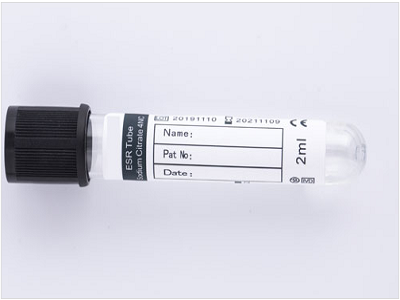Physiological erythrocyte sedimentation rate increased
ESR is a non-specific test and cannot be used alone to diagnose any disease. The erythrocyte sedimentation rate increased slightly during the menstrual period of women, which may be related to endometrial rupture and bleeding; the erythrocyte sedimentation rate gradually increased after 3 months of pregnancy, and returned to normal until 3 weeks after delivery, which may be related to the increase of pregnancy anemia and fibrinogen content, and placental abruption. , birth injuries, etc. The elderly can also increase the erythrocyte sedimentation rate due to the gradual increase in plasma fibrinogen content.

Pathologically increased erythrocyte sedimentation rate
Inflammatory diseases such as acute bacterial inflammation (such as α1 trypsin α2 macroglobulin, C-reactive protein, transferrin, and fibrinogen increase in acute phase reactants) can increase ESR 2 to 3 days after the occurrence. Rheumatic fever is an allergic connective tissue inflammation, and the erythrocyte sedimentation rate increases during the active phase. In the active stage of chronic inflammation such as tuberculosis, the erythrocyte sedimentation rate increases significantly.
Tissue damage and necrosis such as surgical trauma Myocardial infarction
Acute myocardial infarction and pulmonary infarction often increase erythrocyte sedimentation rate 2 to 3 days after the onset, and can last for 1 to 3 weeks. The angina pectoris ESR was normal.
Malignant tumors The erythrocyte sedimentation rate of various fast-growing malignant tumors increased significantly, which may be related to factors such as tumor cell secretion of glycoprotein (a globulin), tumor tissue necrosis, secondary infection or anemia, while benign tumor erythrocyte sedimentation rate was mostly normal. . Therefore, erythrocyte sedimentation rate is often used as malignant tumor and malignant tumor that cannot be detected by general X-ray examination. For patients with malignant tumors, the increased erythrocyte sedimentation rate may gradually become normal due to thorough surgical resection or chemotherapy and radiotherapy, and it will increase again when recurrence or metastasis occurs.
Hyperglobulinemia due to various causes such as multiple myeloma, macroglobulinemia, malignant lymphoma, rheumatic diseases (systemic lupus erythematosus, rheumatoid arthritis), subacute infectious endocardium Hyperglobulinemia caused by inflammation often increases the ESR; chronic nephritis and cirrhosis of the liver increase the globulin, and at the same time decrease the albumin can increase the ESR.
Anemia When Hb<90g/L, ESR can be slightly increased, and it will increase significantly with the aggravation of anemia, but it is not proportional. Mild anemia has no effect on the ESR. If the hemoglobin is lower than 90g/L, the ESR may increase accordingly. The more severe the anemia, the more obvious the ESR increase. Therefore, patients with obvious anemia and backlog should be corrected for anemia factors when doing erythrocyte sedimentation rate examination, and the corrected results should be reported. Hypochromic anemia, which sinks slowly due to the reduced volume of red blood cells and insufficient hemoglobin content; in hereditary spherocytosis and sickle cell anemia, due to the morphological changes that are not conducive to the accumulation of leukocytes, ESR results are often reduced.
Hypercholesterolemia Diabetes, nephrotic syndrome, myxedema, atherosclerosis, etc. or primary familial hypercholesterolemia can increase the erythrocyte sedimentation rate.
Decreased erythrocyte sedimentation rate is less significant, and can be seen in dehydration hemoconcentration caused by various reasons due to a significant increase in the number of red blood cells and a severe decrease in fibrinogen content. True or relative polycythemia, DIC consumptive hypocoagulable phase, secondary fibrinolytic phase, erythrocyte sedimentation rate decreased.
Post time: Aug-12-2022





